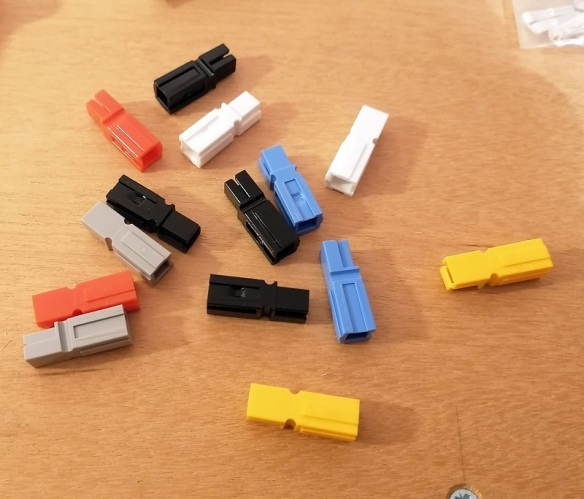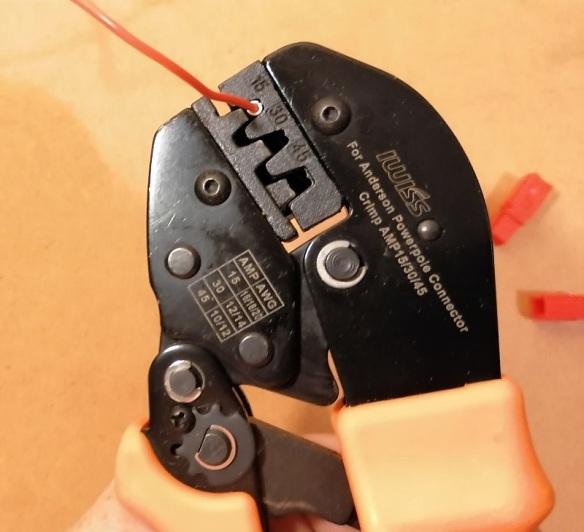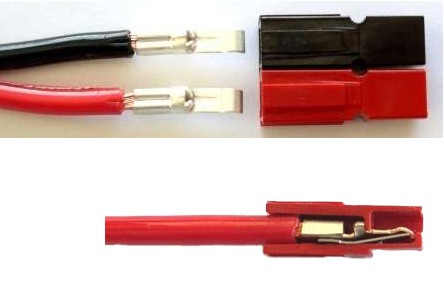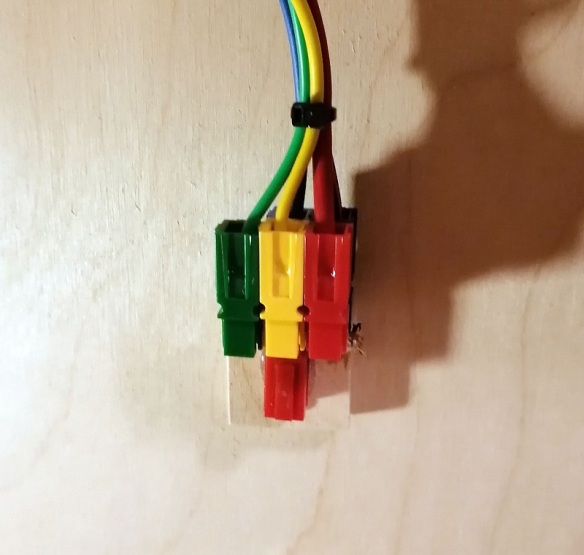In July of 2016 I shared with you how we join our modular layout, ‘Solent Summit’, together electrically using ‘Chock Blocks’. You can find the post here. Since then we’ve improved on this system by using Anderson Powerpole plugs.
The ‘Chock Blocks’ worked well for several years but the more we used the layout, and the larger it gets, we started to notice more and more that wires would get pulled out, the pins in the male sections would need spreading to ensure a good contact, and we were chasing electrical problems.
So we looked around for another solution. There are several out there and they vary in design and price, but in the end we settled on Anderson Powerpole. These are not the cheapest but the quality and reliability, so far, has been outstanding. These have also been the standard connector for the NTRAK Modular Railroading Society since 2005.
There were three things that stood out to us, other than the quality of the product. Firstly, the plugs are universal, which means there is no Male or Female sections, just one plug which connects to any other Powerpole. Secondly, the plugs can be assembled in any order to make a connector to suit your needs; if you connect a wire to the wrong location you can simply move the Powerpole. Thirdly, the Powerpole casings are the same size for the three different wire size fittings so you can easily combine different wire sizes.
The only disadvantage to the system, apart from the cost, is you need a special crimp tool, but that’s it.
The basic system looks like this; a crimp tool, plastic connectors and wire crimps.

The connectors come in a variety of colours.

The crimp tool is fairly large but very easy to use, as you’ll see later on.
The crimp connectors come in three sizes; 15 amp, 30 amp & 45 amp. As we’re working with model railways 15 amp is more than sufficient, but we also have some of the 30 amp crimps simply because they are designed for larger wire. Below are the 15 and 30 amp crimps. The circular part is for the wire and the shaped section fits into the plastic connector.

For my new Tehachapi Loop modules I’ll be using the 15 amp crimps. This orange wire needs to be linked across the two modules.

I strip the wire back by about the same length as the circular section on the crimp using a regular set of wire strippers and twist the ends together. Twisting the ends ensures there are no stray strands.

The crimp tool has three positions, one for each crimp size. The tool is ratcheted so it won’t spring open, allowing you to place the crimp in the jaws without it falling out. The wire can then be placed into the crimp and the tool squeezed. Once the tool reaches the right amount of compression on the crimp the ratchet releases and the tool opens up. As I said before, it’s very easy to use.

The end of the wire is now crimped and is very securely fixed.

The plastic housing has a metal plate inside which the shaped section of the crimp pushes over. Once it’s in it won’t pull back out; the cutaway image below (from Wikipedia) shows how it fits.

The plug can then be added to a plug block which can be assembled in any configuration. Each plug has grooves on two sides and a raised section which fit into the grooves on the the other two sides. And as I said before should you get one in the wrong place, one of the greens for example, it’s easy to slide them apart and correct the positioning.

To make unpacking and packing the modules quicker, as well as protecting the wires in transport, we’ve glued a singe Powerpole plug to the underside of the modules so the connector group can be secured.

The Powerpoles push together easily and hold well, but when you want to pull them apart it can be done without a lot of force.

As you can see they’re ideal for modular layouts. In the main connector I have several small wires and the larger main bus wires, which use the 30amp crimps.

The Anderson Powerpoles are available from lots of places including Amazon and Ebay as is the crimp tool. We have now converted all of our modules to this system and so far it has proved to be well worth it.

You must be logged in to post a comment.